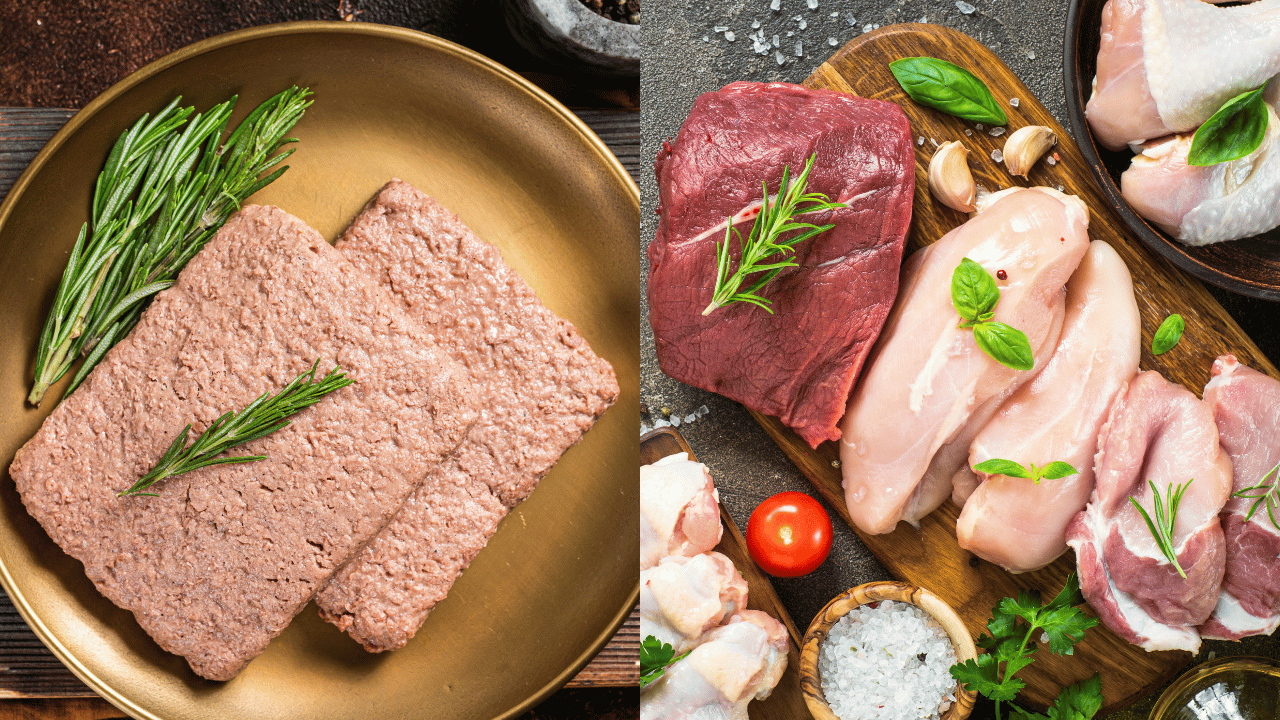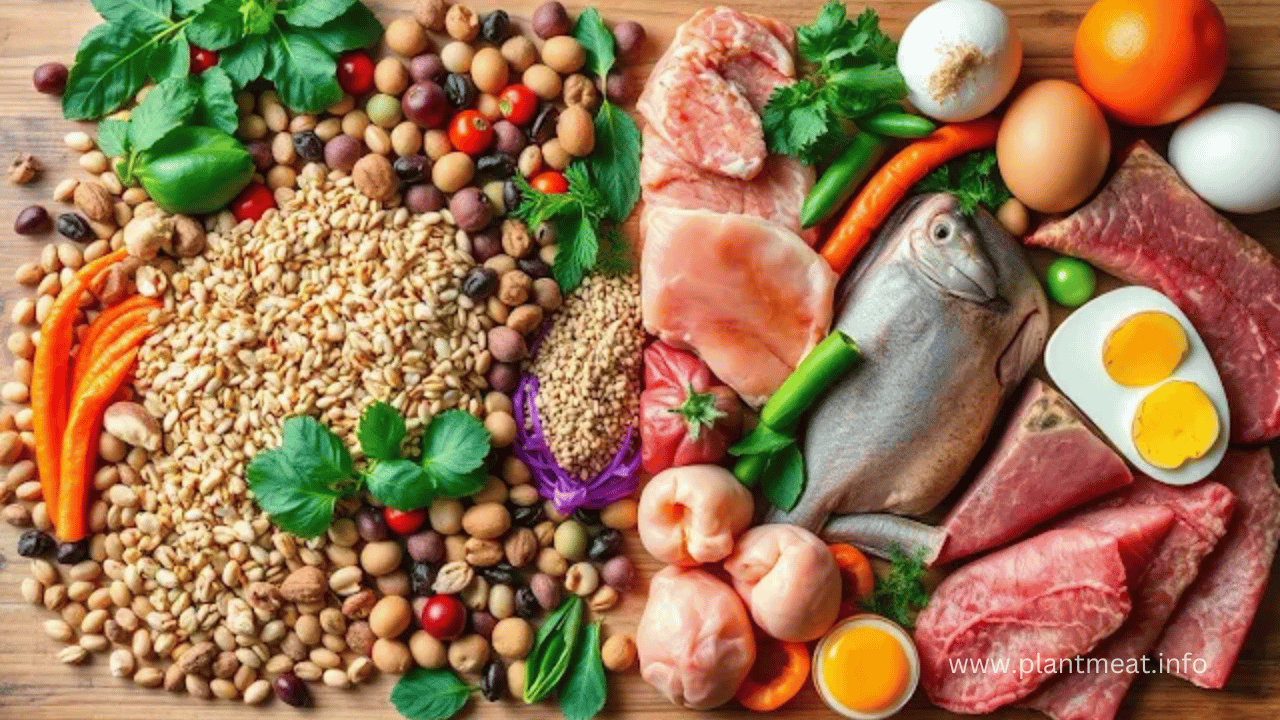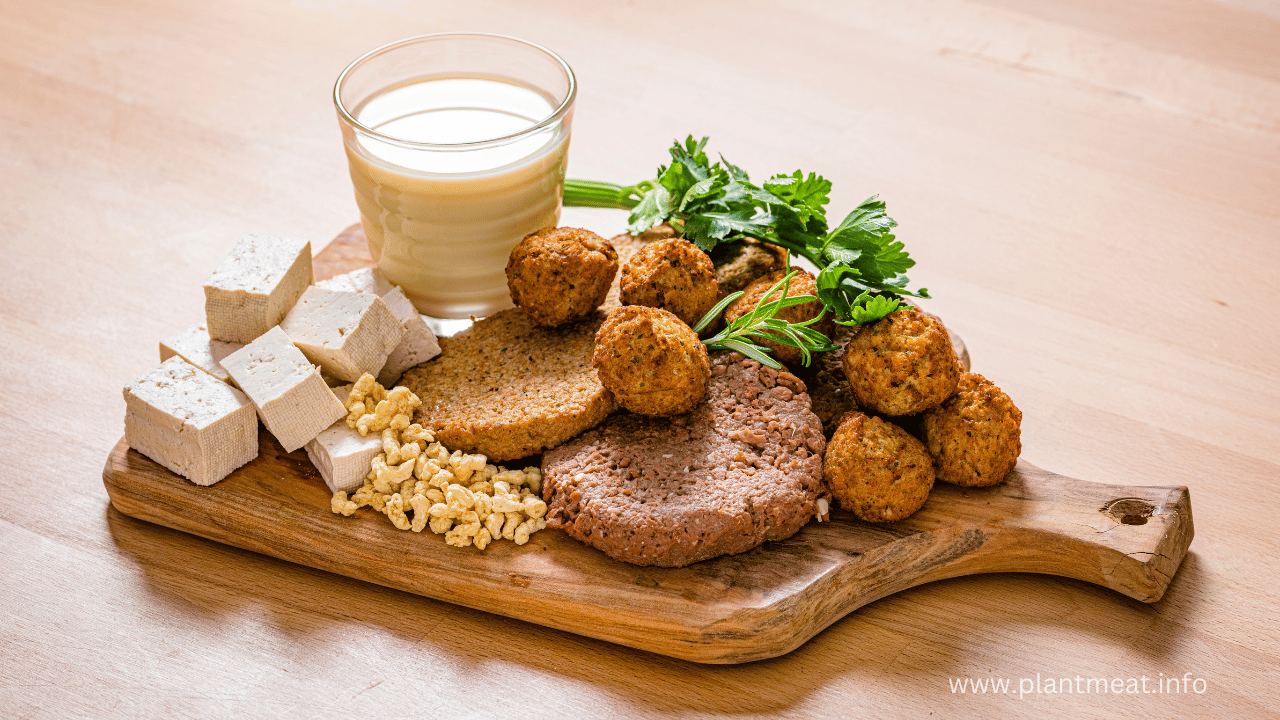PBMA is becoming more recognized. There’s a need for healthier, more sustainable protein resources. Research suggests PBMAs might not be as healthful as full, intact plants. We need to look at how they are made, what goes to them and what their nutrient content is.
It’s predicted that the plant-based meat marketplace in Australia will likely obtain virtually A$three billion end of 2030. In reality, it’s also important to know the dietary differences between plant and animal meat. But this article will help you decide whether plant meat or real meat, is better for your health and nutrition.
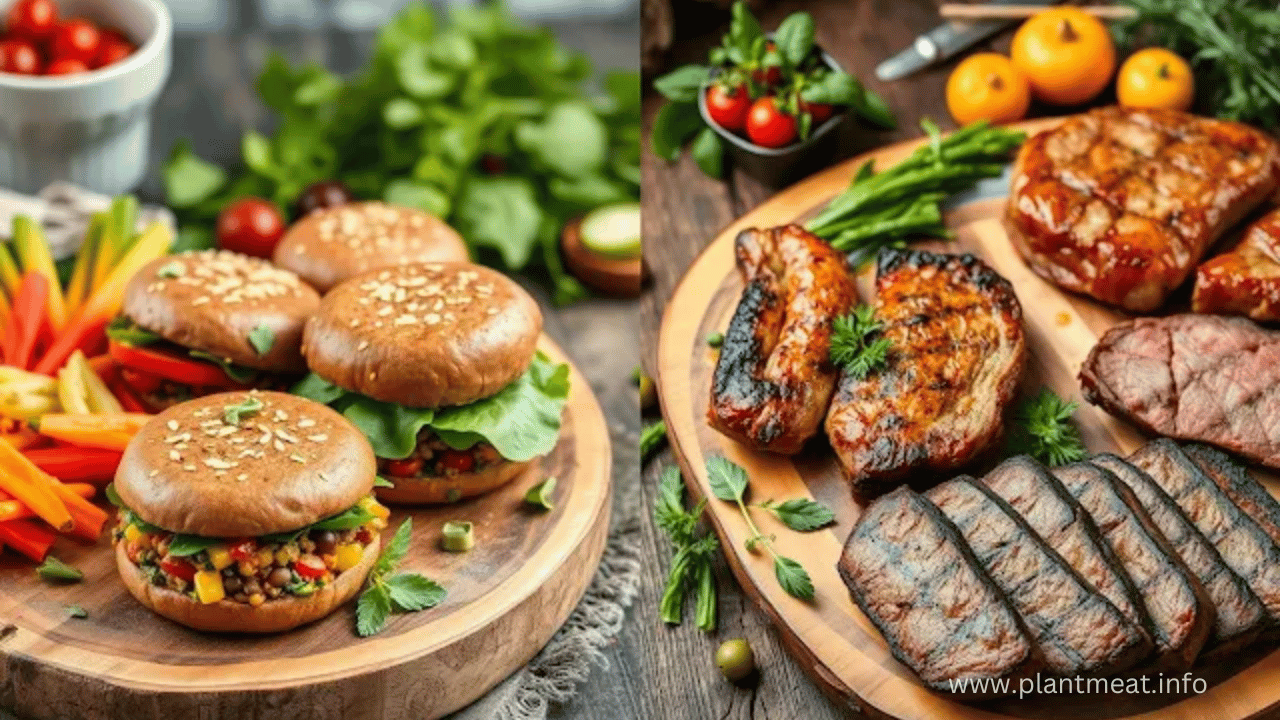
It is important to know parallel to understand plant-based meat
Plant-based meat analogues, or ‘meat substitutes’ as they’re otherwise called, are pretty much identical to the real meat material. The plants that they are made from include soy, wheat, pea or mycoprotein (a fungus-based protein). The goal of these alternatives is to provide a kinder, greener choice to our plates.
What are Plant-Based Meat Analogues?
Here meat substitutes are created to be a better option for traditional meat. Eating meat but better for the planet and animals, that’s what they try to give us. And they are found in all sorts of dishes, including burgers etc.
Market Popularity and Market Growth
The plant-based meat alternative trend is gaining momentum. This is because they want food that will keep them healthy and the planet healthy. It’s already become very popular, and Australians should enjoy amounts near $3 billion by 2030.
This trend is being driven by many factors. People want to see animals protected and the environment preserved and people care about their health. Meanwhile, as they get to know the effect of meat and convince themselves of plant-based diet’s benefits, they look for these alternatives.
“Plant-based meat alternatives can be part of a healthy and sustainable diet,” according to a report by Hu FB, Otis BO & McCarthy G (2019) in JAMA.
Nutritional Comparison: Plant-Based vs Animal Meat
There’s a huge growth in the popularity of plant-based meat alternatives. The important thing is to know how they stack up with traditional animal-based meats. As we see, they did a lot of studies to help us understand this.
Content of Protein, Fat and Fiber
Among plant-based meats, the amount of protein is about the same as animal-based. However, they are less saturated fat and sodium. They also have more fibre, and that’s good for you too.
Micronutrient deficiency, Micronutrient Fortification
Plant-based meats are the same in macronutrients but they are inclined to be short on micronutrients. Less than 12 per cent of plant-based meats have enough iron, vitamin B12 and zinc. More animal-based meats have these nutrients. That’s why we have to do better to fortify plant-based products.
Nutrient | Plant-Based Meat | Animal Meat |
Protein | Similar | Similar |
Saturated Fat | Lower | Higher |
Sodium | Lower | Higher |
Fibre | Higher | Lower |
Micronutrients (Iron, Vitamin B12, Zinc) | Lacking needs fortification | Abundant |
This table shows the main nutritional differences between plant-based and animal-based meats. It helps consumers make better choices.
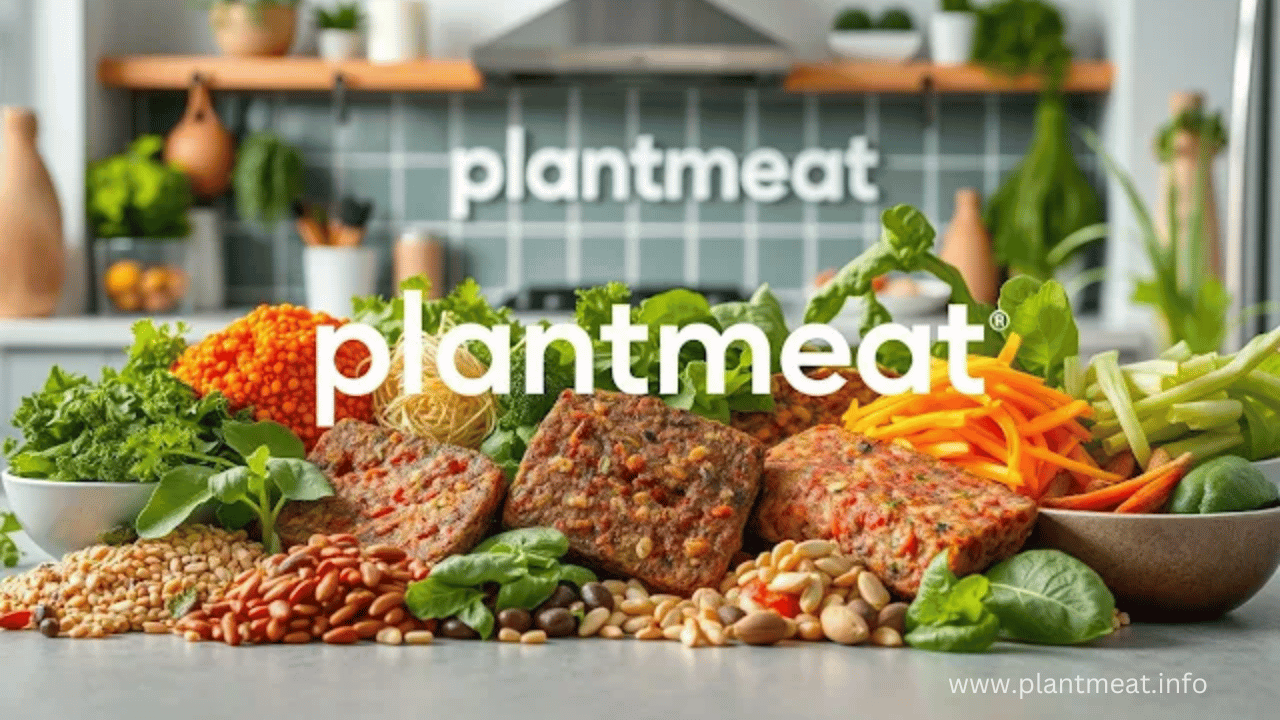
Plant Meat vs Real Meat
Plant-based and animal-based meats are made differently and comprise different things. Ultra-processed plant-based meats taste and look like real meat. There are lots of salt, sugar, artificial colours and so on they could have added to make them attractive.
However, unlike traditional meats animal-based meats are less processed. They don’t have as many additives. They may be healthier choices this way. However, we don’t know for sure yet.
Plant-Based Meat Processing And Additives
The goal of the plant-based meat alternatives is to replicate real meat. They use various methods to achieve this, including:
- Extrusion: Plant ingredients are made into meat-like textures via high heat and pressure.
- Fermentation: Plants proteins are transformed into meat like structures by microorganisms.
- Ingredient blending: Working on that next generation of meat ᅳ mixing vegetable proteins, fats and additives that logically mimic meat.
Added flavourings and preservatives along with these processes make these products ultra-processed. The health effects of these alternatives eating these long term are still being studied.
Comparison to Minimally Processed Animal Meats
And possibly healthier or at least less dangerous are unprocessed or minimally processed animal meats like lean beef or chicken. The ones that have fewer additives and are less processed.
However, the health effect of these meats depends on the product and on how is it made. The healthiest way to eat is to eat balanced food with whole, minimally processed foods. That means plant-based as well as animal-based choices.
“The impact of these differences in processing and additives on overall health outcomes is an area that requires further investigation.”
Health Impact: Cardiovascular and Diabetes Risk
Interestingly, plant-based meat alternatives have been studied recently and how they affect our health. They are compared to traditional animal-based meats. Plant-based diets are good for our hearts and metabolism but the results for plant-based meats are not as impressive.
Blood Sugar Response and Insulin Response
Plant-based meats might not be as healthy as a whole plant diet according to some research. It could be that the nutrients and processing that took place during this one step only. These two types of meat may, in different ways, affect blood sugar control and insulin response. These health impacts need to be studied more.
Blood Pressure Effects and Cholesterol
Studies by other researchers indicate that plant-based meat alternatives also help with cholesterol and blood pressure. It could be good for your heart health. The plant-based meat alternative study found eating such meat can help lower TMAO levels, a known risk factor for heart disease.
No matter which diet was ordered first, LDL cholesterol levels lowered by 10 milligrams per deciliter. That suggests it can be good for our hearts to switch to plant-based alternatives.
Metric | Plant-Based Meat Alternatives | Animal Meat |
TMAO Levels | Lower | Higher |
LDL Cholesterol | Decreased by 10 mg/dL | No significant change |
Blood Pressure | Neutral effect | No data |
These findings imply that dietary greener options, such as plant-based alternatives for red meat, could do us good. This may lower TMAO levels and bad cholesterol. However, we need to do more research to understand what plant-based meat does to our health.
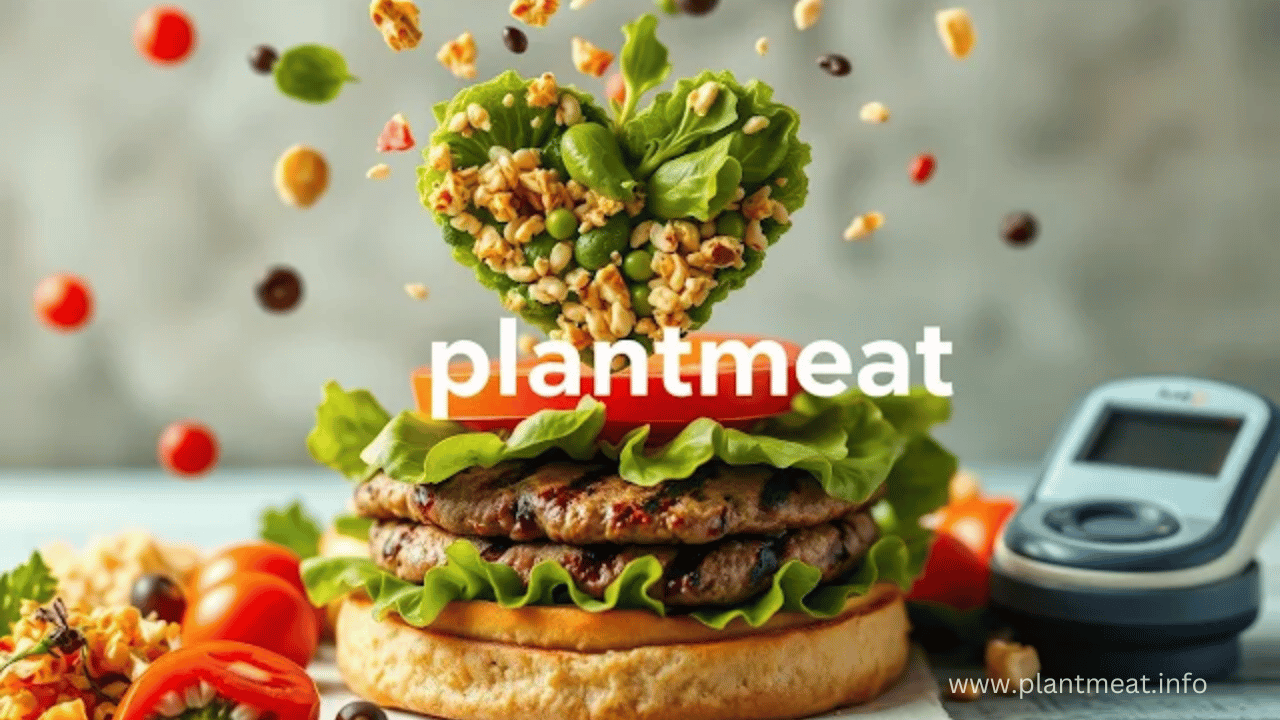
Plant-Based Meats, Incorporated Healthily
It’s good to add healthy plant-based meat to your diet. However, it needs to be done in the right amount. These meats can be enjoyed as part of a diet rich in whole foods like legumes, nuts, seeds and veggies, the experts say.
Knowing what plant-based meats offer is important. But because they can be a good source of protein, they are not all the vitamins and minerals that whole foods might be. You may have to take supplements to get a balanced diet, especially of vitamin B12.
It may be beneficial to see plant-based meats as a part of a healthy diet. It encourages you to eat less meat yet provides you with all the nutrients you need. It allows you to maintain your health and happiness while enjoying plant-based options.
Nutrient Comparison | Seitan | Beyond Burger | Impossible Burger | Jackfruit | Tofu |
Calories (per 100g) | 141 | 230 | 240 | 33 | 49 |
Protein (g) | 25 | 20 | 19 | 1.3 | 4.4 |
Total Fat (g) | 2.3 | 14 | 14 | 0 | 2.2 |
Saturated Fat (g) | 0 | 5 | 8 | 0 | 0 |
Total Carbs (g) | 6 | 7 | 9 | 6.7 | 1.1 |
Fibre (g) | 1.2 | 2 | 3 | 4 | 0 |
Sodium (mg) | 447 | 390 | 370 | 20 | 16 |
If you eat whole foods and know the plant-based meats to offer, you can consume less. This way, you don’t upset your diet and don’t get unhealthy.
“The food we eat has a profound impact on our health, and by making thoughtful choices, we can nourish our bodies and support sustainable food systems.”
Conclusion
The arguments for whether plant-based meat helps you or animal meat is complex. Making plant-based meat can reduce the amount of saturated fat and sodium you are eating. The big catch: It often doesn’t contain important nutrients from animal meat. As well, processing and additives in plant-based meat can be a health concern.
Two options may be to vary plant-based with animal-based proteins. You get a wide range of nutrients this way. It contributes to your health and well-being.
But there’s always the debate and it should be about a balanced diet. That way, I know the difference between plant-based and animal meat. You can choose to do what is best for your health and healthy eating.
FAQ
Are plant-based meat analogues?
Meat substitutes, also called plant-based meat analogues, look, taste and feel like real meat. Instead, they’re made of plants like soy, wheat, pea or fungus.
What is behind the growing popularity of plant-based meat alternatives?
Animal welfare, the environment, and health are some of the reasons why more people want plant-based meat.
What are the nutritional profiles of plant-based vs. animal-based meats?
Plant-based meats contain less fat and sodium but have more fibre. But they have hardly any trace of some nutrients such as iron, vitamin B12, zinc, etc. present in the meat of the animal.
How are plant-based and animal-based meats processed, and what are their additives?
Like all other ultra-processed meats, plant-based meats are usually highly processed with plenty of salt, sugar, and artificial Vanessa. Animal meat is not pasteurized or preserved as chemical conditioners, which are added to pet food meals to assist in creating smells that attract better, reduce runny bowels, enhance absorption, or make puppies more hyperactive.
What are the implications of plant-based meat alternatives and traditional animal-based meats on cardiovascular and metabolic health?
Plant-based diets are good for heart and metabolic health. However, plant-based meats aren’t the same as whole plant foods.
What are ways to include plant-based meats in a healthy diet?
Eat plenty of whole plant foods and enjoy a range of plant-based meats if you need to get enough nutrients, like vitamin B12.

